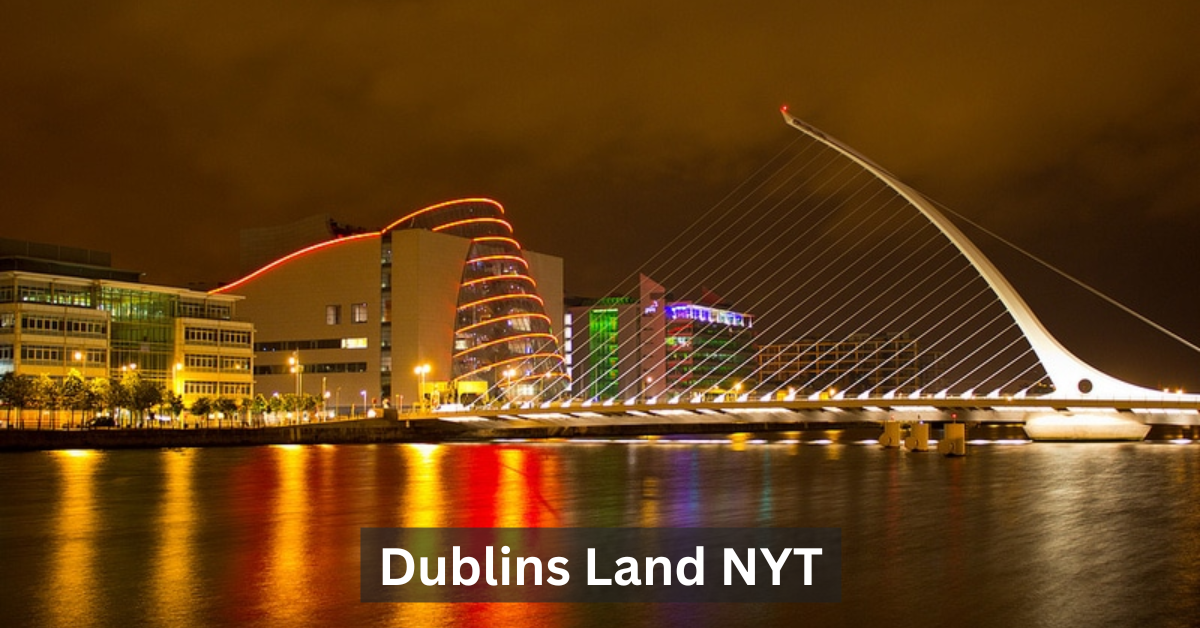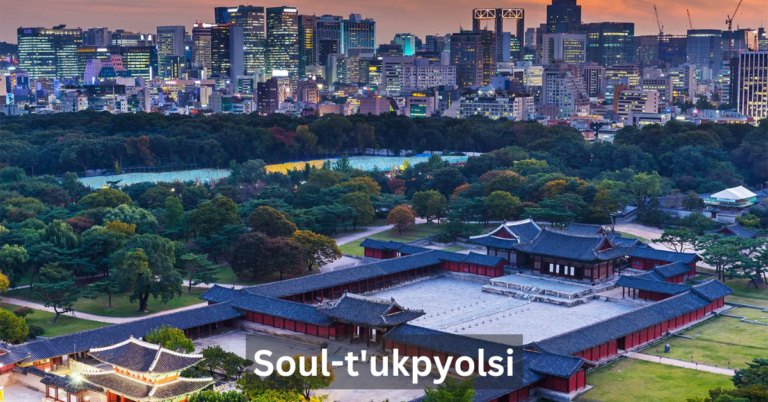Dublins Land NYT: A City Where Tradition Meets Modernity
Dublins Land NYT, the vibrant capital of Ireland, has long been a city steeped in history and culture. Its cobblestone streets and iconic landmarks tell the stories of the past, while its bustling business districts and contemporary art scenes reflect its progressive nature. In recent years, Dublin has garnered attention worldwide, especially after the publication of Dublins Land NYT, a feature article in The New York Times that highlights the city’s remarkable transformation and the balance it strikes between preserving its heritage and embracing modern development.
The article, Dublins Land NYT, explores how the city is reshaping itself into a global hub for tourism, business, and culture, while also fostering sustainable practices to ensure a bright future for generations to come. This comprehensive review of Dublin’s dynamic landscape provides insight into what makes the city so special—its blend of the old and new, its thriving arts and culture scene, and its commitment to innovation and sustainability.
Dublin is more than just the capital of Ireland—it’s the heartbeat of the nation, offering a unique combination of ancient history, rich culture, and a forward-thinking outlook. Over the years, Dublin has transformed into a thriving metropolis that attracts millions of visitors annually. The city’s historical significance, combined with its modern achievements in arts, architecture, and business, makes it one of the most exciting places to explore in Europe.
In the feature Dublins Land NYT, the city is praised for its ability to preserve its cultural heritage while pushing the boundaries of innovation. The city’s urban transformation, its role in fostering creativity, and its commitment to environmental sustainability make it a model for future urban development.
What Is “Dublins Land NYT” and Why It Matters
Published by The New York Times, Dublins Land NYT delves into Dublin’s transformation, showcasing its ability to grow and modernize while staying rooted in its historical and cultural identity. The article highlights Dublin’s reputation as a cultural capital and a city that welcomes new ideas and opportunities. It discusses the strategic urban planning that has shaped Dublin’s skyline and infrastructure, such as the redevelopment of the Dublin Docklands, and the city’s growing role in the global economy.
This feature has significantly contributed to Dublin’s rising profile on the world stage, attracting more tourists and businesses alike. With its innovative architecture and commitment to sustainability, Dublin is poised to continue its upward trajectory, and Dublins Land NYT serves as a testament to the city’s successful blend of tradition and modernity.
The Cultural and Historical Significance of Dublin
Dublin is often referred to as the cultural heart of Ireland, a title it truly deserves. Home to UNESCO-recognized literary landmarks, such as Trinity College Dublin and the Book of Kells, the city is a testament to the rich literary and artistic heritage of Ireland. Writers like James Joyce, Samuel Beckett, and Oscar Wilde were all born and raised in Dublin, and their works have shaped not only Irish literature but also world literature.
In Dublins Land NYT, the city’s cultural richness is celebrated, with particular emphasis on how modern-day Dublin continues to foster creativity through its diverse art scenes. From galleries showcasing contemporary Irish artists to the celebrated performances at the Abbey Theatre, Dublin is a city that honors its past while actively nurturing the future of art and literature.
Some of the most iconic historical sites in Dublin include Dublin Castle, Trinity College, and the Book of Kells, all of which are featured prominently in Dublins Land NYT. These landmarks are not only important for their architectural beauty but also for the stories they hold. Dublin Castle has stood as a symbol of Ireland’s turbulent history, while Trinity College is a world-renowned institution where the Book of Kells—a 9th-century manuscript containing the four Gospels—is housed.
Visitors to Dublin can explore these landmarks, learn about the city’s long and complex history, and understand the pivotal role Dublin has played in shaping Irish culture and identity.
Dublin’s role as the birthplace of many of Ireland’s greatest writers cannot be overstated. The city’s literary history is intertwined with its identity, and today, Dublin remains a hub for writers, poets, and playwrights. The annual Dublin Writers Festival and Bloomsday, a celebration of James Joyce’s Ulysses, are just a few examples of how the city honors its literary heritage.
In Dublins Land NYT, the city’s contribution to global literature is highlighted as a key element of its cultural appeal, drawing countless visitors each year to trace the footsteps of literary giants.
Dublin is a city where the arts thrive in all forms. Whether you’re enjoying a live performance at the Abbey Theatre, exploring the latest exhibitions at the National Gallery of Ireland, or listening to live traditional Irish music in the famous Temple Bar district, there is something for everyone.
The Abbey Theatre: A Historic Venue for Irish Drama
The Abbey Theatre, founded in 1904, has long been the epicenter of Irish theatre. It continues to celebrate Ireland’s rich dramatic traditions while offering a platform for contemporary works. Dublins Land NYT discusses the significance of this iconic venue in preserving and showcasing Ireland’s dramatic arts, making it a must-visit for anyone interested in Irish culture.
Dublin’s modern art scene is booming. New galleries and cultural events spring up each year, offering a platform for emerging artists from Ireland and abroad. In addition to the established galleries, pop-up art shows, live performances, and street festivals transform the city into an ever-evolving canvas.
Dublin’s artistic energy is contagious, and in Dublins Land NYT, the city’s contemporary art scene is highlighted as one of the driving forces behind its growing international appeal.
No visit to Dublin is complete without experiencing its traditional Irish music. Whether you’re in the lively Temple Bar area, known for its pubs and artistic flair, or in quieter corners of the city, the sounds of folk music, ballads, and jigs fill the air. Dublin’s musical heritage, as well as its modern music scene, continues to attract visitors from around the world.
Urban Development and the Dublin Docklands
One of Dublin’s most impressive success stories of urban transformation is the Dublin Docklands redevelopment. Once a gritty, industrial area, the docklands have been transformed into a bustling business and residential district, thanks to innovative urban planning. This redevelopment is featured extensively in Dublins Land NYT, showcasing how the city is able to modernize its urban landscape while preserving key historical features.
Dublin’s urban renewal has not only improved the quality of life for its residents but also made the city more appealing to tourists. New pedestrian-friendly areas, innovative transport options, and cutting-edge buildings have made Dublin easier to navigate and more enjoyable to explore.
In Dublins Land NYT, the city’s urban development is shown to have had a direct impact on its tourism numbers, with more visitors choosing Dublin as their destination of choice for a city break.
Looking forward, Dublin’s urban development continues with projects like the Grand Canal Innovation District, which seeks to bring together tech startups, creative industries, and academic institutions in one central location. This and other initiatives are designed to drive economic growth, foster innovation, and maintain Dublin’s reputation as a city of the future.
Dublin’s Natural Beauty: Parks and Green Spaces
Dublin’s commitment to green spaces is evident in Phoenix Park, which is one of the largest enclosed urban parks in Europe. This vast green space offers a peaceful retreat from the city’s hustle and bustle, with opportunities for picnics, biking, and wildlife watching. The park is also home to the Zoological Gardens and Áras an Uachtaráin, the official residence of the President of Ireland.
Just outside the city, the Wicklow Mountains National Park offers stunning landscapes, including rugged mountains, deep valleys, and tranquil lakes. As Dublin continues to embrace sustainability and eco-tourism, parks like Phoenix Park and the Wicklow Mountains National Park are key attractions for those seeking to experience the natural beauty of Ireland.
Conclusion
Dublins Land NYT has brought international attention to Dublin’s remarkable transformation into a thriving city that honors its historical roots while embracing modernity. From its vibrant arts scene to its innovative urban planning and commitment to sustainability, Dublin is a city that offers something for everyone. Whether you’re drawn to its rich literary history, its modern tech scene, or its natural beauty, Dublin is a city poised to lead the world into the future while keeping its cultural identity intact.
Frequently Asked Questions
What is the significance of Dublins Land Nyt’s Land Nyt ’s Land NYT?
The article Dublins Land Nyt’s Land Nyt ’s Land NYT in The New York Times showcased Dublins Land Nyt’s Land Nyt ’s transformation into a modern metropolis while preserving its historical charm. It highlights the city’s dynamic cultural scene, innovative urban development, and sustainability efforts, offering a comprehensive view of Dublins Land Nyt Land Nyt ’s current and future potential.
What are the must-visit historical landmarks in Dublins Land Nyt’s Land Nyt?
Some of the must-visit historical landmarks in Dublins Land Nyt s Land Nyt include Dublins Land Nyt s Land Nyt Castle, Trinity College, and the Book of Kells, all of which offer a deep dive into Ireland’s rich history and culture.
How has urban development impacted tourism in Dublins Land Nyt’s Land Nyt?
Urban development, particularly in areas like the Dublins Land Nyt’s Land Nyt Docklands, has made the city more accessible and appealing to tourists. Modern infrastructure, improved public transport, and vibrant business districts have enhanced the overall visitor experience, contributing to Dublins Land Nyt Land Nyt ’s increasing popularity.
What are Dublins Land Nyt s Land Nyt ’s main sustainability initiatives?
Dublins Land Nyt’s Land Nyt is committed to sustainability, with initiatives like the promotion of green spaces (such as Phoenix Park and Wicklow Mountains National Park), eco-friendly transport options, and green building projects. These efforts help make Dublins Land Nyt s Land Nyt a model for sustainable urban development.
What is the future of Dublins Land Nyt’s Land Nyt in the next decade?
The future of Dublins Land Nyt’s Land Nyt looks promising, with continued investment in innovation, culture, and sustainability. As the city expands, it will become even more of a global leader in technology, business, and eco-tourism, offering new opportunities for residents and visitors alike.
Stay in touch to get more updates & alerts on Ancient-Artz! Thank you

